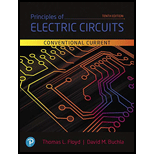
EBK PRINCIPLES OF ELECTRIC CIRCUITS
10th Edition
ISBN: 9780134880068
Author: Buchla
Publisher: VST
expand_more
expand_more
format_list_bulleted
Concept explainers
Question
error_outline
This textbook solution is under construction.
Students have asked these similar questions
In Figure (a) the drawing of the bipolar circuit was as shown in Figure 4. Draw me a unipolar circuit and how it will be in Figure (b). Please draw the circuit with the transistors.
SOLVE ON PAPER NOT BY CHATGPT
Draw fabrication layer transistor MS (schottky diode)
Knowledge Booster
Learn more about
Need a deep-dive on the concept behind this application? Look no further. Learn more about this topic, electrical-engineering and related others by exploring similar questions and additional content below.Similar questions
- Need Handwritten solution not using chatgt or AIarrow_forward2. Suppose G₁(s) = (s+2) G₂(s) = (s-3) C(s) Find the transfer function G(s): for each of the following three configurations R(s) shown in Figure 1. Note (a) is a cascaded (series) system, (b) is a parallel system, and (c) is a feedback (closed-loop) system. € (c) C(s) R(s) G₁(s) G2(5) G₁(s) R(s) C(s) G2(s) C(s) R(s) G₁(s) G₂(s) Figure 1arrow_forwardDetermine the transformer's active power losses and primary voltage (Figure 1). The busbar's voltage at the transformer's secondary side is 20.5 kV. Load P is 6 MW, and the power factor is 0.95ind.arrow_forward
- Select a short-circuit withstanding (1-second short circuit length) cable for Feeder 1 in Figure 1. Values for cables are given in Table 1. The voltage of the supplying network is now 115 kV and the short-circuit power of the supplying network is 2000 MVA. Table 1. Technical information of 3-phase cables (10 kV and 20 kV) Product's name EA-number Structural information 20KV 20KV 20 KV 0624250 0624252 0624253 0624254 AHKAMK-W AHKAMKW AHKAMKWAHKAMKW AHKAMKW AHKAMKW AHKAMKW 3x50Al+35Cu 3x95 Al. 35Cu 3x120Al. 35Cu 3x150Al+35Cu 3x185Al+35Cu 3x240A1+70 Cu 3x300Al+70Cu 20kV 20kV 20 kV (8) 20KV 0624255 0624257 0624256 Diameter of conductor Diameter of out-most circle Cable's outer diameter Mass Delivery information Standard length Delivery reel mm 8.0 11.3 12.7 14.1 15.7 18.1 20.3 mm 28 32 34 35 37 40 43 mm 64 71 74 76 80 89 94 aluminium kg/km 510 910 1100 1350 1650 2200 2700 сорраг kg/km 305 305 305 305 305 600 600 cable kg/km 2350 3100 3450 3800 4300 5500 6250 E 500 500 500 500 500 500 500…arrow_forwardA three-phase 20 kV medium-voltage line is 10 km. Resistance is 0.252 2/km and reactance is 0.128 92/km (inductive). Voltage at the beginning of line is 21.0 kV. At the end of the line is loading P = 2.5 MW with power factor 0.92ind. Draw 1-phase equivalent diagram and calculate line voltage at the end the of line, active and reactive power at the beginning of the line and power losses of the line.arrow_forwardA three-phase 20 kV medium-voltage line is 10 km. Resistance is 0.365 2/km and reactance is 0.363 2/km (inductive). Voltage at the beginning of line is 20.5 kV. At the end of the line is loading P= 800 kW with power factor 0.95ind. Draw 1-phase equivalent diagram and calculate load current, line voltage at the end the of line, voltage drop and power losses of the line.arrow_forward
- 6. Answer the following questions. Take help from ChatGPT to answer these questions (if you need). Write the answers briefly using your own words with no more than two sentences, and make sure you check whether ChatGPT is giving you the appropriate answers in our context. A) What is a model in our context? B) What is an LTI system? C) What are the three forms of model we have used in the class so far to represent an LTI system? Among the above three forms, which forms can still be used to represent a nonlinear system?arrow_forward5. Consider the following block diagram of a system in the Figure 4. Y₁(s) G₁ G2. R(s) C(s) Y₂(s) G3 G4 Figure 4 The models of the blocks G1, G2, G3 and G4 are represented by a differential equation, transfer function, state-space form, and impulse response as the followings. dy1 G₁: +2y₁ = 3r(t) dt 1 G2: G₂(s) = S+3 G3: x=2x+r, y2=3x-r G4: h(t)=8(t) + et 1(t) Find the simplified expression of the overall transfer function of the system i.e., G(s) = Note for G3 block, you may need to use the formula H(s) = C (sI - A)-¹ B+ D. C(s) R(s)arrow_forward4. Simplify the block diagram in Figure 3 and find the closed-loop transfer function G(s) = C(s) R(s) G₁ R(s) Figure 3 C(s) G2 H₁ H₂arrow_forward
- 1. Consider a system defined by the following state-space equations. -5 2 N-MAN-G = 3 -1 y = [12] Find the transfer function H(s) = x1 x2. Y(s) U(s)' + 5arrow_forward3. Simplify the block diagram in Figure 2 and find the closed-loop transfer function G(s) = C(s) R(s)' G₁ C(s) R(s) G2 G3 G4 Figure 2arrow_forwardRigid network supplies Feeder 1 through 110/21 kV transformer (Figure 1). Short circuit power of the supplying network is 5000 MVA and voltage is 110 kV. Determine 3-phase short circuit current for the point A. Draw 1-phase equivalent diagram. How big is the current if the 3-phase short circuit occurs in the Busbar? 110/21 kV Busbar Supplying network S = 16MVA 4-10% Figure 1. Feeder 1: 1-5km - r = 0.337 2/km x 0.361 2/km Aarrow_forward
arrow_back_ios
SEE MORE QUESTIONS
arrow_forward_ios
Recommended textbooks for you
 Electricity for Refrigeration, Heating, and Air C...Mechanical EngineeringISBN:9781337399128Author:Russell E. SmithPublisher:Cengage Learning
Electricity for Refrigeration, Heating, and Air C...Mechanical EngineeringISBN:9781337399128Author:Russell E. SmithPublisher:Cengage Learning

Electricity for Refrigeration, Heating, and Air C...
Mechanical Engineering
ISBN:9781337399128
Author:Russell E. Smith
Publisher:Cengage Learning
How does a Transformer work - Working Principle electrical engineering; Author: The Engineering Mindset;https://www.youtube.com/watch?v=UchitHGF4n8;License: Standard Youtube License